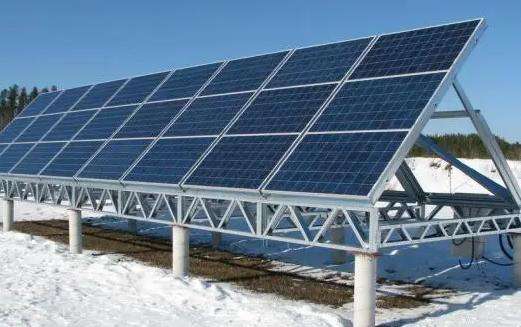As the blade increases its own weight, the power received changes.
Wind energy refers to the kinetic energy of the wind. The kinetic energy of a specific air mass can be calculated using the following formula.
Energy = 1/2 X mass
Power = 1/2 p>
Area refers to the cross-sectional area of the airflow, and the unit is square meter
The unit of speed is meter/second;
At sea level and 15 degrees Celsius, the density of dry air is 1.225 kg/m3. Air density changes with atmospheric pressure and temperature. As altitude increases, air density decreases.
It follows from the above formula that the wind power is proportional to the cube (cube) of the speed and proportional to the swept area of the wind wheel. But in fact, the wind wheel can only extract parte of wind energy, not all of it.
2) The operating principle of wind turbines
Modern wind turbines use aerodynamic principles, just like the wings of an airplane. The wind does not "push" the blades of the wind wheel, but blows through the blades to form a pressure difference between the front and back of the blades. This pressure difference will generate lift, causing the wind wheel to rotate and continually pass through the wind flow. .
The rotor of a wind turbine cannot extract all the power from the wind. According to Betz's law, the maximum power that a wind engine can theoretically extract is 59.6% of the wind power. Most wind turbines can only extract 40% or less of the wind's energy.
Wind turbines mainly consist of three parts: the wind turbine, the nacelle and the tower. The most common structure of large-scale wind turbines connected to the power grid est a three-blade horizontal axis wind wheel installed on a vertical tubular tower.
The blades of the wind wheel are made of composite materials. Unlike small wind turbines, the rotors of large wind turbines rotate quite slowly. Relatively simple wind turbines use a fixed speed. Usually two different speeds are used: a low speed in light winds and a high speed in strong winds. The asynchronous induction generators of these fixed speed wind turbines can directly generate alternating current at grid frequency.
Relatively new designs are usually variable speed (for example, the Vestas company's V52-850 kilowatt wind motor has a rotation speed of 14 rpm to 31.4 rpm). With variable speed operation, the aerodynamic efficiency of the wind wheel can be improved, thereby extracting more energy and producing less noise inlight wind conditions. Therefore, variable speed wind motor designs are becoming more and more popular than fixed speed wind motors.
Sensors installed on the nacelle detect the direction of the wind, and thanks to the mechanical steering device, the nacelle and the wind wheel are automatically turned to face the incoming wind.
The rotational motion of the wind wheel is transmitted to the generator in the engine room through the gear transmission (if there is no gear transmission, it is transmitted directly to the generator) . In the wind industry, wind turbines equipped with gearboxes are very common. However, direct-drive multipole generators designed for wind turbines have also seen significant development.
Transformers located at the base of the tower (or some located in the engine room) can increase the generator voltage up tothe voltage of the distribution network (11 in Hong Kong) thousand volts).
The power output of all wind turbines varies depending on the wind. The two most common methods of limiting power output (and therefore rotor stress) in high winds are stall adjustment and pitch adjustment. Using stall-regulated wind motors, strong winds exceeding the rated wind speed will cause turbulence in the airflow passing through the industrial blades, causing the wind turbine to stall. When the wind is too strong, the rear braking device of the industrial blade will work to brake the wind wheel. Using a wind motor with angle adjustment, each blade can rotate with the longitudinal axis as the axis, and the angle of the blade changes with the wind speed, thereby changing the aerodynamic performance of the wheel wind turbine. When the wind is too strong, the blades turn towards the edge of theair faces the incoming wind, thus causing the wind turbine to brake.
The angle between the blades is 90°. What will be the energy production effect? When the wind acts at an angle of 90 degrees to a certain blade, it is 0° to the next blade. While the wind still acts on the first blade, it will also act on the second blade.
If the wind force at that time is different, one blade will be pushed forward while the other blade will be stopped. This is not only detrimental to wind power generation, but also consumes more equipment. What can be concluded is that the interaction between the four blades is relatively large, which affects the result of their interaction and reduces the power. The blades of the two blades interfere with each other, and the interaction between them is also obvious, which is also undesirable. Therefore, the three-blade type is reasonable.e.














